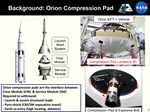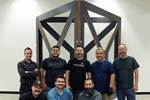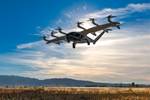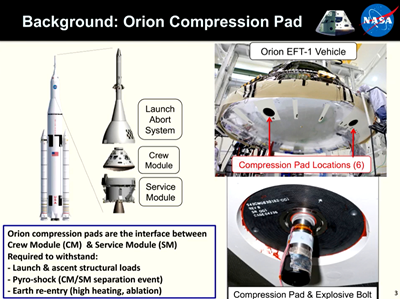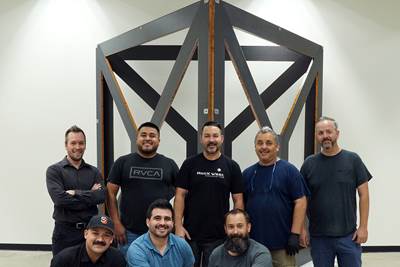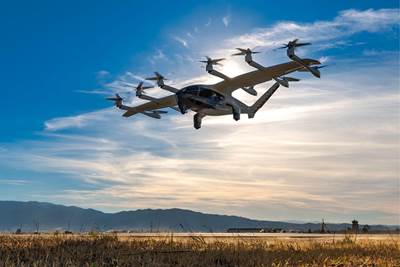Intuitive Machines’ Nova-C makes successful launch to the moon
The lunar lander, complete with Type 5 pressure vessels, was deployed on Feb. 15 for testing the lunar environment in preparation for future NASA Artemis landers.
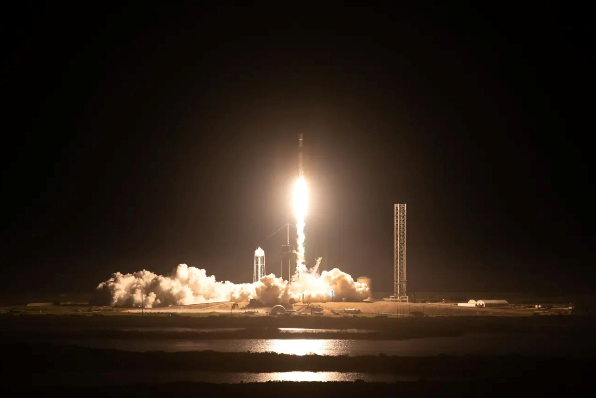
A SpaceX Falcon 9 rocket carrying Intuitive Machines’ Nova-C lunar lander lifts off from Launch Pad 39A at NASA’s Kennedy Space Center in Florida at 1:05 a.m. EST on Feb. 15, 2024. Source | NASA
A suite of (Washington, D.C., U.S.) science instruments and technology demonstrations is on the way to the moon via ’ (Houston, Texas, U.S.) Nova-C lunar lander, which was launched at 1.05 a.m. EST in Feb. 15 on a SpaceX Falcon 9 rocket at the agency’s Kennedy Space Center in Florida. Through this flight to the moon, Nova-C — enabled by an all-composite unibody Type 5 pressure vessel — will provide insight into the lunar surface environment and test technologies for future landers and Artemis astronauts.
At approximately 1:53 a.m., the lander deployed from the Falcon 9 second stage. Teams confirmed it made communications contact with the company’s mission operations center in Houston. The spacecraft is stable and receiving solar power.
These deliveries are part of NASA’s Commercial Lunar Payload Services (CLPS) initiative and Artemis campaign, which includes new solar system science to better understand planetary processes and evolution, search for evidence of water and other resources and support long-term human exploration (learn more about how composites are positively impacting this program).
While en-route to the moon, NASA instruments will measure the quantity of cryogenic engine fuel as it is used, and during descent toward the lunar surface, they will collect data on plume-surface interactions and test precision landing technologies.
Once on the moon, NASA instruments will focus on investigating space weather/lunar surface interactions and radio astronomy. The Nova-C lander also will carry retro-reflectors contributing to a network of location markers on the moon for communication and navigation for future autonomous navigation technologies.
NASA science aboard the lander includes:
- : A small, CubeSat-sized experiment that will demonstrate autonomous navigation that could be used by future landers, surface infrastructure and astronauts, digitally confirming their positions on the moon relative to other spacecraft, ground stations or rovers on the move.
- : A collection of eight retro-reflectors that enable precision laser ranging, which is a measurement of the distance between the orbiting or landing spacecraft to the reflector on the lander. The array is a passive optical instrument and will function as a permanent location marker on the Moon for decades to come.
- : A light detection and ranging (LiDAR) guidance system for descent and landing. This instrument operates on the same principles of radar but uses pulses from a laser emitted through three optical telescopes. It will measure speed, direction and altitude with high precision during descent and touchdown.
- : A technology demonstration that measures the amount of propellant in spacecraft tanks in a low-gravity space environment. Using sensor technology, the gauge will measure the amount of cryogenic propellant in Nova-C’s fuel and oxidizer tanks, providing data that could help predict fuel use on future missions.
- : The instrument will observe the moon’s surface environment in radio frequencies, to determine how natural and human-generated activity near the surface interacts with and could interfere with science conducted there.
- : A suite of four tiny cameras to capture imagery showing how the moon’s surface changes from interactions with the spacecraft’s engine plume during and after descent.
Intuitive Machines’ Nova-C-class lunar lander, named Odysseus, is scheduled to land on the moon’s South Pole region near the lunar feature known as Malapert A on Feb. 22, 2024. This relatively flat and safe region is within the otherwise heavily cratered southern highlands on the side of the moon visible from Earth. Landing near Malapert A will also help mission planners understand how to communicate and send data back to Earth from a location where Earth is low on the lunar horizon.
The NASA science aboard will spend approximately seven days gathering valuable scientific data about Earth’s nearest neighbor, helping pave the way for the first woman and first person of color to explore the moon under the Artemis program.
Related Content
Low-cost, efficient CFRP anisogrid lattice structures
CIRA uses patented parallel winding, dry fiber, silicone tooling and resin infusion to cut labor for lightweight, heavily loaded space applications.
Read MoreCIRA qualifies CMC structures for the reusable Space Rider
Italian team designs, builds and tests multiple large, complex thermal protection system structures made from patented ISiComp C/C-SiC ceramic matrix composites.
Read MoreNear-zero erosion ultra-high temperature CMC
K3RX commercializes UHTCMC for a wide range of markets, demonstrating performance in prototypes, assemblies and advancing manufacturing to reduce cost.
Read MoreRevolutionizing space composites: A new era of satellite materials
A new approach for high volumes of small satellite structures uses low-CTE, low-cost CFRP cellular core, robust single-ply skins and modular panel systems to cut lead time, labor and cost for reflectors, solar arrays and more.
Read MoreRead Next
Bally Ribbons 3DMAT quartz composite is adopted for future NASA space missions
Named the NASA Government Invention of the Year, the 3D orthogonally woven materials supports structural and thermal performance needs for Orion mission and more.
Read MoreRock West Composites delivers composite assembly fixtures for NASA PASS program
Nine-by-nine-foot fixtures were designed with tight tolerances for thermal and moisture stability, supporting NASA’s push to enable in-orbit construction of hardware for future space programs.
Read MoreArcher, NASA sign agreement for eVTOL, space battery cells R&D
This initial project under the Space Act Agreement is focused on studying and developing high-performance battery cells, as well as performing safety testing, to achieve purpose-built solutions for electric aircraft.
Read More
